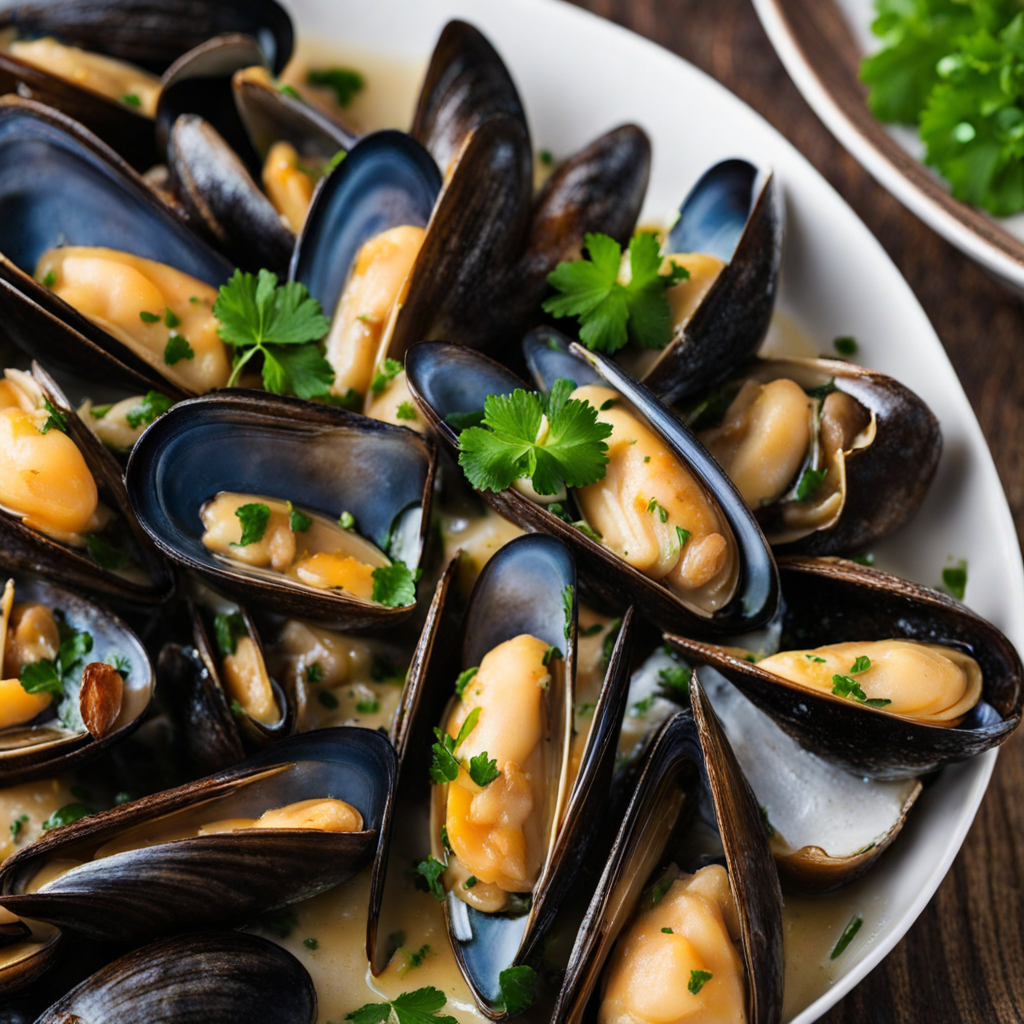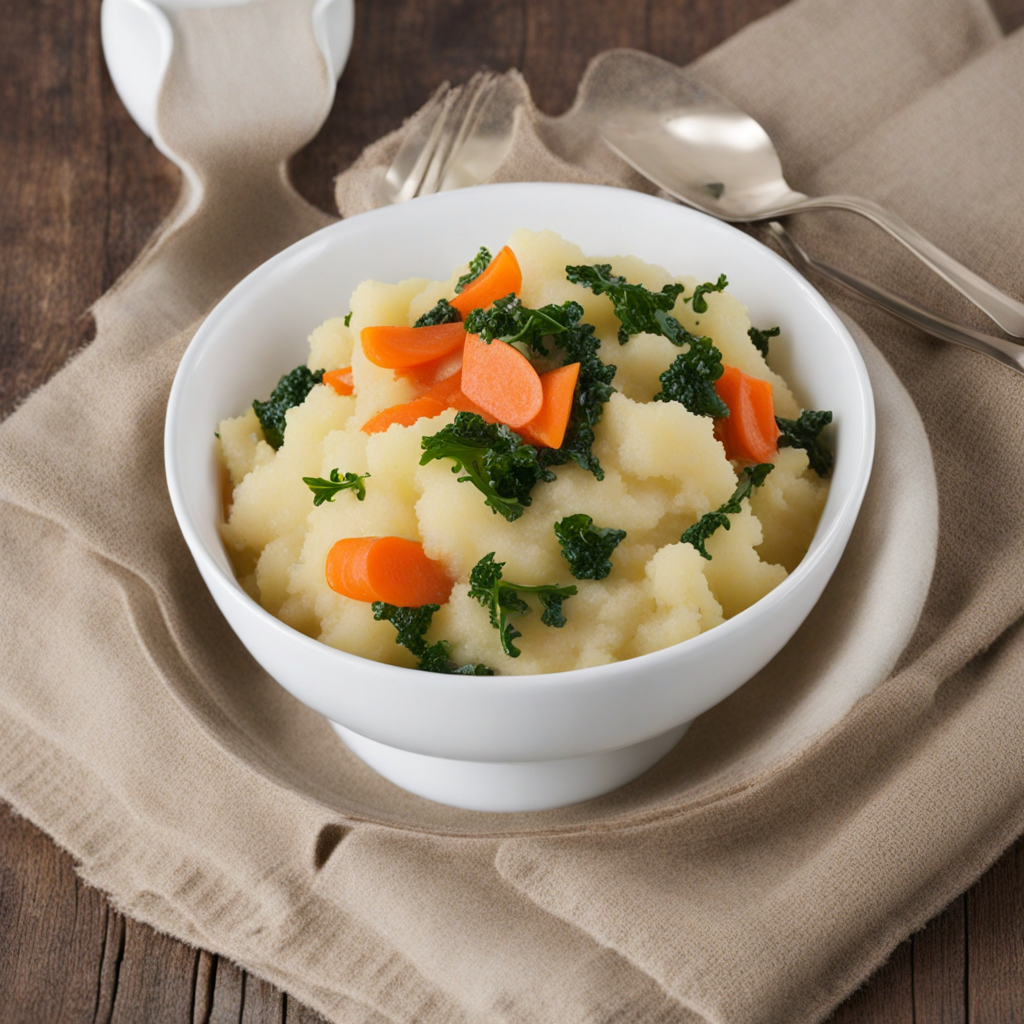Mosselen
Mosselen, or mussels, are a beloved dish in the Netherlands, particularly popular along the coastal regions. These bivalve mollusks have been harvested from the North Sea and other bodies of water for centuries, forming an integral part of Dutch culinary culture. The history of mosselen can be traced back to the Middle Ages when they were commonly consumed by the working class due to their abundance and affordability. Over time, the dish evolved into a celebrated staple, often enjoyed during the summer months at special occasions and festivals. The flavor profile of mosselen is both delicate and briny, reflecting their marine habitat. When cooked properly, mussels have a sweet, tender meat that yields easily from their shells. The natural saltiness of the sea is complemented by the addition of aromatic ingredients, making each bite a flavorful experience. The essence of the ocean shines through, with a slight earthy quality that enhances the overall taste. The dish is often seasoned with herbs, spices, and accompanying sauces, which contribute to its rich and satisfying flavor. Preparation of mosselen is relatively straightforward, yet it requires careful handling to ensure freshness and optimal taste. Generally, the mussels are first cleaned and purged to remove any sand or grit. This involves soaking them in fresh water for a short period and scrubbing their shells to remove any debris. Once cleaned, they are typically cooked by steaming, which allows them to open up and reveal their tender flesh. The traditional method involves placing the mussels in a large
How It Became This Dish
The History of Mosselen: A Culinary Gem from the Netherlands Mosselen, or mussels, hold a cherished place in Dutch culinary tradition. This bivalve mollusk, which thrives in the brackish waters of the North Sea, is not only a vital ingredient in various dishes but also a symbol of the rich maritime culture that has shaped the Netherlands. The story of mosselen is woven into the fabric of Dutch history, revealing insights into agricultural practices, trade, and social customs. #### Origins: The Bounty of the Sea The origins of mussel consumption in the Netherlands can be traced back to prehistoric times. Archaeological evidence suggests that early inhabitants of the coastal regions relied on shellfish, including mussels, as a primary food source. These mollusks were abundant along the Dutch coast and provided essential nutrients to the diets of early communities. The cultivation of mussels began in earnest during the Middle Ages. As fishing techniques advanced and communities developed a deeper understanding of marine ecosystems, mussel beds were established. The Dutch began to farm mussels, a practice that allowed them to maintain a sustainable source of this protein-rich food. Mussel farming became particularly prominent in the 16th century, coinciding with the rise of the Dutch maritime empire. The Netherlands, with its extensive coastline and access to the North Sea, became a hub for seafood trade. Mussels were not only consumed locally but also exported to other European countries, including France and England, where they were embraced for their flavor and versatility. #### Cultural Significance: A Culinary Staple Mosselen is more than just a dish; it is a cultural staple in the Netherlands. The traditional preparation of mussels often involves steaming them in a broth of white wine, garlic, onions, and herbs, a method that enhances their natural briny sweetness. This simple yet elegant preparation reflects the Dutch philosophy of letting fresh ingredients shine. In the Netherlands, mussels are typically enjoyed during the summer months, particularly from July to September, when they are at their peak. The arrival of the mussel season is celebrated, and many restaurants feature special mussel menus, offering a range of dishes that highlight this beloved shellfish. The dish “Mosselen met Friet” (mussels with fries) has become a quintessential Dutch meal, often enjoyed with a side of mayonnaise and a cold beer, making it a favorite among locals and visitors alike. Mussels have also found their way into traditional Dutch celebrations and gatherings. Coastal towns, such as Yerseke and Bruinisse, host annual mussel festivals that attract thousands of visitors. These events celebrate the harvest of mussels and showcase the culinary creativity of local chefs. At these festivals, people gather to enjoy various preparations of mussels, share stories, and revel in the communal experience of food. #### Development Over Time: From Farm to Table The cultivation and consumption of mussels in the Netherlands have evolved significantly over the centuries. In the 20th century, advancements in aquaculture transformed mussel farming. Techniques such as rope culture and buoy-based farming allowed for increased yields and a sustainable approach to mussel harvesting. The introduction of stricter regulations and environmental protections ensured that mussel populations could thrive, balancing economic interests with ecological responsibility. Moreover, the global seafood market has influenced the way mosselen are prepared and consumed. As Dutch chefs have traveled and studied culinary traditions from around the world, they have incorporated diverse flavors and techniques into mussel dishes. From Asian-inspired curries to Mediterranean variations with tomatoes and olives, the versatility of mussels has led to innovative culinary creations that pay homage to both traditional and contemporary influences. In recent years, there has been a growing emphasis on sustainability and local sourcing in Dutch cuisine. Many chefs advocate for using locally harvested mussels, promoting not only the freshness of the ingredients but also supporting local fisheries and communities. This movement reflects a broader trend in the culinary world, where consumers are increasingly aware of the environmental impacts of their food choices. #### The Future of Mosselen As the Netherlands continues to navigate challenges such as climate change and overfishing, the future of mosselen remains intertwined with sustainable practices. Initiatives to promote responsible mussel farming and the conservation of marine habitats are gaining momentum. These efforts aim to ensure that future generations can continue to enjoy the rich flavors and cultural significance of this beloved seafood. In addition, the rise of plant-based diets and alternative seafood products poses new questions for the traditional mussel industry. While some may view this trend as a challenge, it also presents opportunities for innovation. Chefs and food producers are exploring ways to create plant-based mussel alternatives that mimic the taste and texture of the real thing, appealing to a broader range of consumers. #### Conclusion Mosselen is more than just a dish in the Netherlands; it is a reflection of the country’s history, culture, and relationship with the sea. From its ancient origins to its status as a beloved culinary staple, the story of mussels reveals the significance of food in shaping communal identities. As the Dutch continue to celebrate and innovate around this cherished bivalve, the future of mosselen remains bright, promising new flavors, sustainable practices, and a continued appreciation for the sea’s bounty. Whether enjoyed at a seaside café or at a bustling festival, mosselen will undoubtedly remain a symbol of Dutch culinary heritage for generations to come.
You may like
Discover local flavors from Netherlands







